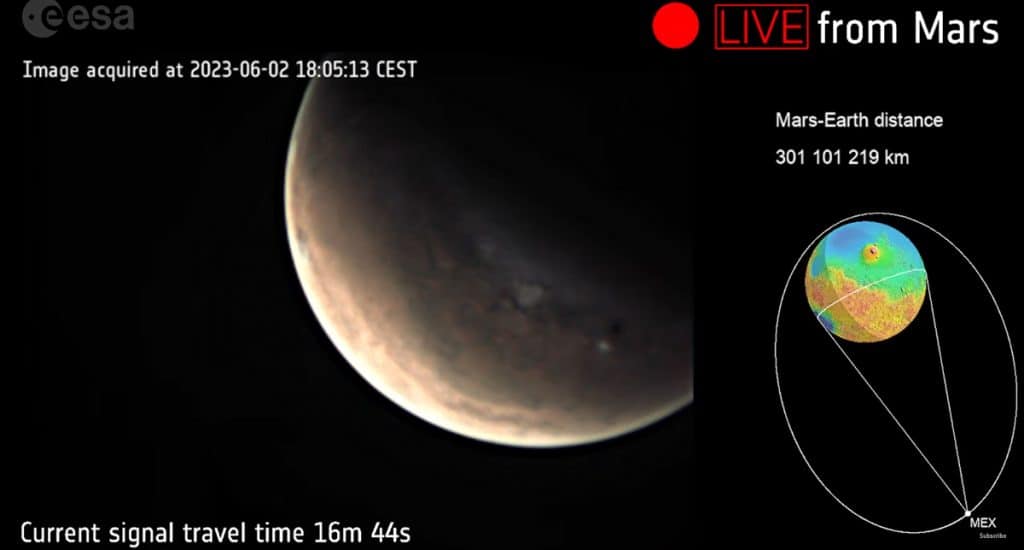Mars Live: See the planet in historical live

This Friday (2), for the first time in history, there was a long-term live broadcast directly from Mars. Responsible for the event is the European Space Agency (ESA), which planned the unprecedented feat as part of the mission’s 20th anniversary celebrations mars express.
As expected, the live it started punctually at 13:00 (Brasilia time), on ESA’s official YouTube channel, and lasted one hour.
This will be as close to a live view of the Red Planet as possible
European Space Agency, in a statement publicizing the event
During the transmission, Mars and Earth were just over 301 million km apart, at positions in space favorable for the minimum. delay possible (delay between capture and arrival of images). According to information, the signal travel time was 16 minutes 44 seconds.
About every 50 seconds, new records captured by the orbiter’s onboard Visual Monitoring Camera (VMC). mars express they were received by a 35 m deep space antenna at the Cebreros station, in Spain, located about 10 km east of the city of the same name and 90 km from Madrid.

According to ESA, images from Mars can take between three and 22 minutes to reach Earth, depending on the relative positions of the two planets orbiting the Sun.
This is also why there is no truly “live” news from space, since we are limited by the speed of light which travels great distances.
Most observations made by spacecraft occur during periods when they are not in direct contact with a receiving antenna on Earth, either due to distance, location in space, or the placement of the transmitting antenna pointing to another direction during the collection of scientific data.
This is not a problem for researchers. The data is stored and sent a few hours or even days later when the spacecraft is back in contact with Earth. In the case of the Mars Express satellite, every two days a new batch is downloaded, processed and made available to the world.
There are just a few examples of real-time imagery from space, such as NASA’s DART and LCROSS missions, which filmed the vision as they intentionally collided with the asteroid Dimorphos and the Moon, respectively. Besides, of course, the Apollo missions, which broadcast spectacular videos of the globe and astronauts walking on the lunar surface.
Those missions, though, were all pretty close to home. The more distant ones sent back maybe an image or two in near real time.
It is true that there was a “live” broadcast of NASA’s Perseverance rover landing on Mars in 2021. However, the delay it was bigger than this time, plus as far as a long-term real-time broadcast from deep space is concerned, this is the first time.
The post Mars Live: Seeing the Planet in Live History first appeared on Olhar Digital.
Source: Olhar Digital
Leave a Reply